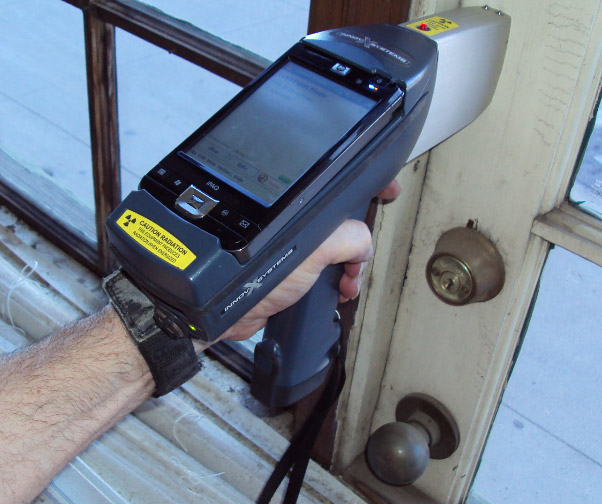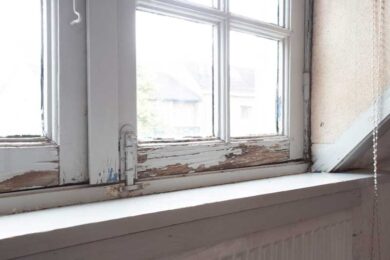Lead Removal Contractors-- Knowledgeable Professionals for Lead Abatement
Lead Removal Contractors-- Knowledgeable Professionals for Lead Abatement
Blog Article
Best Practices for Making Certain Safe and Complete Lead Offense Abatement
Resolving lead violation reduction calls for a multi-faceted technique to make certain both safety and conformity. First assessments utilizing sophisticated discovery methods such as XRF analyzers established the phase for a precise understanding of contamination levels. Including correct containment methods, consisting of impermeable barriers and HEPA filtering, paired with making use of personal protective devices (PPE) for employees, creates the backbone of a protected procedure. Careful cleaning protocols, featuring HEPA vacuuming and wet-wiping, are important. Yet, it's the last clearance procedure, entailing comprehensive assessments and research laboratory screening, that absolutely confirms a lead-free atmosphere, making sure long-term security. How do these practices adjoin to assure thorough lead reduction?

Initial Evaluation
Carrying out an initial analysis is an important initial step in lead infraction abatement. This stage includes a detailed analysis of the residential property to identify the visibility, extent, and details places of lead-based hazards. Certified professionals, such as licensed lead inspectors or take the chance of assessors, ought to execute an extensive website evaluation, making use of devices like X-ray fluorescence (XRF) analyzers to accurately discover and measure lead concentrations in paint, dust, dirt, and water.
The evaluation has to likewise include a testimonial of the building's history, previous records, and any problems or wellness issues reported by owners - Lead Removal Contractors. Documenting the findings thoroughly is important, as these records create the basis for developing an efficient reduction strategy. An extensive analysis also involves sampling and research laboratory evaluation, which are crucial to confirm the existence of lead and overview succeeding activities
Furthermore, it is necessary to connect the results transparently to all stakeholders, including homeowner, lessees, and regulatory authorities. By guaranteeing that the first assessment is carried out with precision and rigor, experts can lay a solid foundation for a targeted and effective lead reduction process, eventually securing public wellness and guaranteeing conformity with regulative requirements.
Appropriate Control
Appropriate containment is important to avoid the spread of lead contaminants throughout abatement activities. Properly handling containment minimizes the threat of lead dust and particles migrating to non-work locations, consequently protecting both the environment and people outside the immediate job zone.

Normal assessments of the control area are necessary to look for breaches or weak points in the obstacle. Any type of recognized problems must be immediately addressed to maintain the stability of the containment. By adhering to these practices, abatement tasks can successfully regulate lead contamination and minimize associated health and wellness risks.
Employee Defense
Making certain worker security is extremely important throughout lead reduction projects to prevent job-related direct exposure to hazardous lead bits. Necessary actions include the use of personal click here to read protective devices (PPE) such as respirators, handwear covers, and full-body fits specifically developed to block lead dirt visit and fumes. Workers need to go through extensive training on the correct usage and upkeep of PPE, including healthy testing for respirators to guarantee optimum efficiency.
Design controls, such as local exhaust air flow systems, are essential in decreasing airborne lead concentrations in the job setting. Administrative controls should additionally be carried out, consisting of restricting the duration of exposure and revolving workers to minimize specific direct exposure times. Regular medical monitoring and organic monitoring are indispensable for early detection of lead absorption, making it possible for prompt intervention and treatment.
Moreover, developing a decontamination method is important. Employees should adhere to rigorous purification procedures prior to breaks and at the end of their change to avoid lead dirt from being lugged outside the work area. This includes complete hand and face cleaning with lead-specific cleaner and changing out of infected apparel.
Meticulous Cleanup
Maintaining a secure work environment expands beyond employee protection and encompasses precise cleanup to make certain lead bits are extensively gotten rid of from the website. The procedure of precise clean-up is vital in stopping the recontamination of the mellowed out location and safeguarding both existing and future owners.
To accomplish an extensive cleanup, all workspace should be systematically decontaminated. This entails making use of specialized HEPA (High-Efficiency Particulate Air) hoover and wet-wiping methods to record and eliminate fine lead dust that might have chosen surfaces. It is necessary to clean all straight surface areas, including floors, home window sills, and countertops, as well as upright surfaces that may have entraped lead particles.
Employees must use appropriate individual protective equipment (PPE) during clean-up to prevent exposure to residual lead dust. Utilized cleansing materials such as wipes, sponges, and wipe heads should be thrown away based on contaminated materials disposal guidelines.

Last Clearance
Last clearance is the essential ending stage of lead reduction that figures out whether the site is safe for reoccupation. This vital action entails comprehensive examination and testing to confirm that all lead hazards have been properly eliminated.

Final clearance testing not only safeguards future owners yet also ensures conformity with regional, state, and federal guidelines. Moreover, it functions as a documented validation of the reduction specialist's have a peek at this website adherence to sector finest methods. Making sure a thorough and effective last clearance is essential in protecting public wellness and promoting depend on in the reduction process.
Verdict
Making certain risk-free and thorough lead infraction abatement necessitates a diverse strategy incorporating initial evaluations with sophisticated discovery approaches, reliable containment approaches, stringent employee defense procedures, and careful clean-up treatments. The last clearance stage, featuring detailed evaluations and lab screening, is essential to verify compliance with EPA requirements. Adherence to these finest techniques guarantees a safe environment for residents, alleviates health dangers, and upholds governing demands, therefore promoting public wellness and safety in lead-affected areas.
Report this page